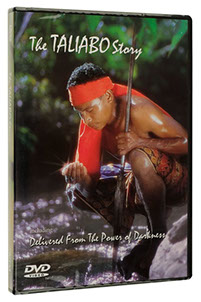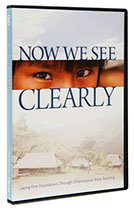HOW GOODSEED TOOLS CAN HELP YOU
TRAIN YOUR SHORT-TERM MISSIONS TEAM
(Reading time: 15 minutes)
In this “How to Train” series, we describe practical ways our tools have been used by believers worldwide to share the message of the gospel.
This article focuses on how GoodSeed resources can be used in tried and tested ways to help train your short-term missions team so everyone has the same understanding of the gospel message. This approach will equip each one on your team with lifelong skills in sharing the gospel clearly and confidently wherever God calls them—whether across the street or across the sea.
We hope you will find these proven suggestions helpful. We also invite you to share your own experiences with us to benefit others. You can write to us via our contact form.
No two missions teams are alike. Some are sent out by small local congregations; others are organized by large para-church agencies. A jumbo jet takes one group across the ocean, while a church van takes another to a neighbouring city. Ministry tasks also vary: construction projects, orphanage ministry, disaster relief, youth ministry, medical trips, etc. They are as diverse as one can imagine.
Similarly, no two team members are alike. They have different backgrounds, experiences, goals, skills and personalities. One important consideration is that they may have different levels of understanding of the gospel. In some instances, their understanding may be faulty.
Since the heart of every mission trip is to advance the gospel (Mark 16:15), it’s vital that everyone on the team be on the same page concerning the gospel. Very often, this is not the case.
Consider these questions:
1. Is your team made up of all believers?
Given the diversity of your team members, it is entirely worth asking: Are they all believers? It is not uncommon to discover a team member who has not placed his or her faith in Christ for salvation.
2. Are they able to clearly express their understanding of the gospel?
In screening applicants for an upcoming short-term mission trip, it is not sufficient for team members to simply check a box or otherwise state that they’re believers. Rather, it is important that you as a team leader be able to hear each one clearly express how the significance of Christ's death, burial and resurrection relates to him or her personally.
If someone is unable to do this, what confidence can you have that the individual is actually a believer? And how confident are you that the mission trip will be a good idea for them? (Learn what the essentials of the gospel are through the Four Irreducible Minimums.)
It is possible for your team members to hold varying opinions on many topics in Scripture without impacting the trip, but the right foundation for any mission trip needs to be a common understanding and agreement on the core essentials of the gospel itself.
3. What experience do they have in sharing the gospel?
Many first-time mission trippers have had little experience in evangelism in their own community or among their own friends, much less in a cross-cultural setting. How can you give your team members some experience in sharing the gospel before the trip?
the heart of every mission trip is to advance the gospel
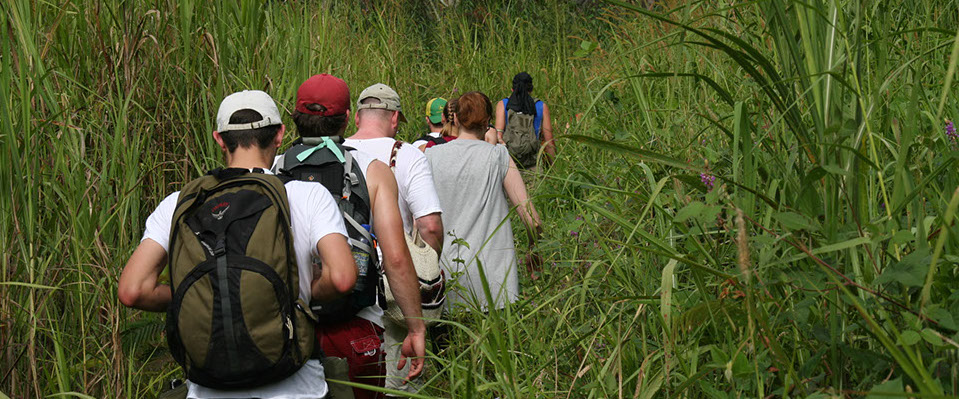
The Big Challenge faced by short-term teams

An Approach to training your short-term team in the gospel
1. Ensure everyone has a clear understanding of the gospel
More important than achieving the work objectives of a trip is getting the gospel clear in the minds of every team member. To achieve this, it is necessary to build into the training program time to study the gospel message together.
2. Train the team members to be lifelong ambassadors for Christ
How can we ensure that such trips have lasting benefit for team members and ultimately the gospel? More than just preparing for one trip, you can invest time in your team members so that they can spend the rest of their lives sharing the gospel in an effective manner. They should be comfortable doing so wherever they go in life: whether they end up in full-time ministry or not.
3. Enable them to train others in how to share the gospel
Moving beyond becoming lifelong ambassadors, it is good to be able to train team members on how they can coach others on how to share the gospel. Doing this will multiply the effectiveness of the trip. Imagine after the trip, your team members being ready to help other believers become effective ambassadors. This means that a short-term trip can have long-lasting impact!
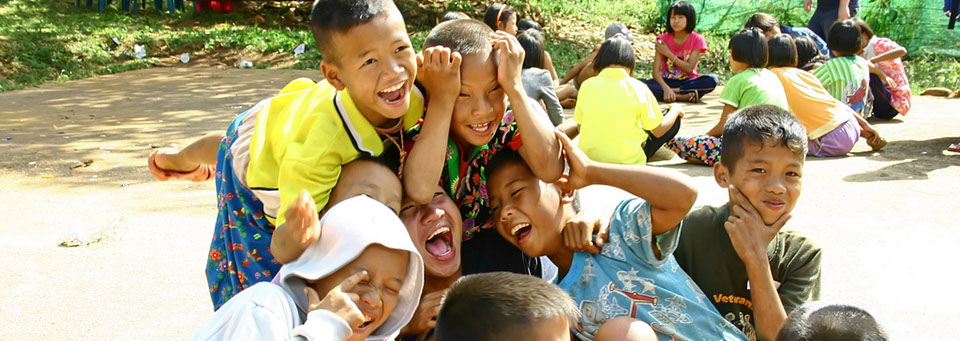
Tried & Tested: Tools and How-tos
Timetable
Here is a suggested pre-trip training program for your short-term missions team. It will take between 15-40 hours to complete depending on which options you choose, so you will need to plan accordingly (especially if you have other training programs that you need to go through as well.) Remind the team that this training program is not just for the trip but also for their roles as lifelong ambassadors for Christ.
Make sure all members attend all the sessions of the Worldview Rethink course. Ask everyone to commit to it. Having members skip sessions during the Worldview Rethink course will result in poor understanding (or worse, misunderstanding!) as the gospel message is taught as one continuous narrative.
The remaining sections will help them understand better the challenges we face when sharing the gospel with a biblically illiterate world.
Objective
Plan
Time Needed
1. Ground team members in a clear understanding of the gospel
Options (Choose one):
1. Worldview Rethink course
2. By This Name
3. The Stranger VideoBook
4. (Only in situations where time is extremely limited): The Story that Matters
15-16 hours
15-16 hours
11 hours
1 hour
2. Paint them a picture of what missions looks like
1. "Ee-taow!" DVD
2. In-ká-hai: How Sweet It Is!
1 hour
8 hours
3. Practise evangelism in everyday life
1. Lead a Worldview Rethink course
2. Learn to give and guide
15 hours
1 hour
1. Ground the team in a clear understanding of the gospel
Option 1
Worldview Rethink with By This Name
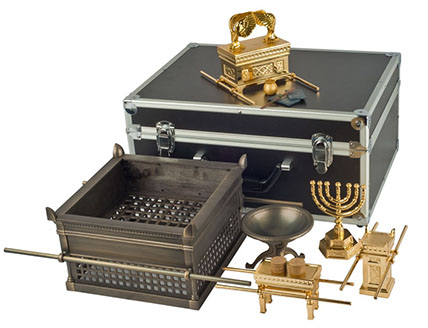
Time Requirement: The entire content takes about 15-16 hours. A long weekend retreat works the best or you can choose to have several sessions of two hours each over seven weeks. Like any good story, spreading it out with too many interruptions makes it difficult to remember.
The shorter the span of time taken to cover the content, the more cohesive the gospel story will be to them.
Read: Each person would need to have his own book and a highlighter. Go through the book together, reading out loud. The team leader can read the commentary while team members read the Bible verses. This allows Scripture to impact team members directly.
Highlight: In reading the content together, the team leader will guide the team to highlight the important statements with a marker.
Watch: At the relevant sections, pause to play the relevant video clip on the DVD.
Visual Aids: Use the visual aids at the appropriate times. These are helpful in explaining and reinforcing many key ideas in a way that is particularly meaningful.
Review with Workbook: Get team members to review the lesson at home using the workbook. At the start of the next session, quickly review the answers together to ensure proper understanding. Do not proceed unless all are clear on the previous lessons.
Review with Visual Aids: At the start of the next lesson, pick out a previously taught visual aid and hand it to a team member. Ask him to explain what the visual aid taught. This method of review is engaging and helps members remember the significant points.
Questionnaire: The questionnaire at the end of the course gives team members an opportunity to articulate what they learned about the gospel. It also gives you, the leader, confidence that each one understands the message and can articulate it clearly.
By This Name
Option 2
If a weekend retreat or weekly meetings are not an option for you, then require each team member to read and watch the online videos for By This Name in their own time, well before you leave on your trip.
Discuss: To get a better feel for their grasp of the content, plan a meeting where the leader can discuss the points taught in the lessons to ensure clear understanding. For example, the leader can ask them the following questions:
- “Why did Jesus have to die on the cross?”
The reader should indicate that he understands that the payment for his sin was death, which Jesus was willing to take on his behalf.
- “If you were to die, what would you be relying upon for entrance into Heaven?”
The reader should indicate that he is trusting the death of Jesus in his place, believing that God views him as righteous based upon what Christ accomplished on the cross and by his resurrection.

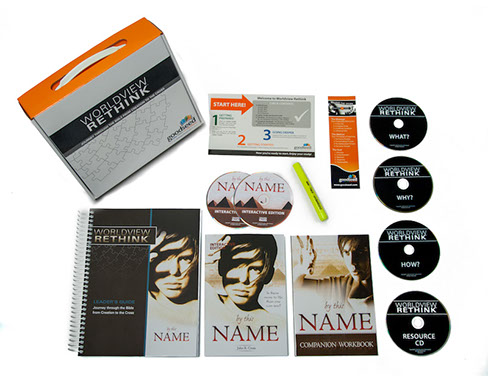
By This Name is GoodSeed's premier resource that explains the Bible’s core message to people who have no knowledge about the Bible. Using the architecture of the gospel of John, the book clearly sets apart the God of the Bible from all other gods.
It establishes the authority of Scripture and gently compares the biblical worldview to eastern worldviews. It ties together key Old and New Testament stories to reveal the identity of God and the nature of sin, with the aim to answer two questions: “Who is Jesus?” and “What is the story of the cross and the tomb all about?” It helps a person understand clearly what the Bible is all about.
Option 3
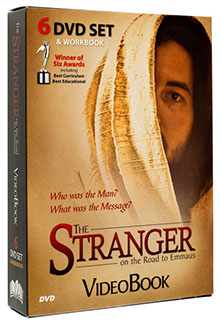
The Stranger on the Road to Emmaus VideoBook
Note: This Videobook covers the content of Worldview Rethink with The Stranger. This is a helpful way for the leader to review the content for himself as the team learns.
Time Requirement: This is an 11-hour series. Again, it would be best to complete the whole series as fast as possible. We recommend setting aside five sessions of 2+ hours each for this.
Watch: Watch the video together. It is broken up into segments of between 4-27 minutes each.
Review: Get each team member their own workbook. You can choose to have the team attempt the questions as a group after each session or take them home for review.
Option 4
The Story that Matters
Time Requirement: This booklet takes less than an hour to read. It is not what we would recommend for a robust curriculum for mission trippers, but if you are extremely hard pressed for time, this would be an option.
Read: Each person can be given a copy to be read at home.

2. Paint a picture of what missions looks like
Educate the team on how missionaries work to bring the gospel to others. Effectively communicating the gospel in missions' work does not happen quickly. It takes time to share the gospel clearly so that it is understood within the language and culture of the people. The examples and stories told in this step are about tribal missions, but the challenges encountered are the same even in urban settings.
Team members often begin to recognize some of the same hurdles and solutions right in their own communities. It is important that they understand who we are reaching out to (their background, their culture, etc.) and the contrast between the worldview of our target audience and that of the Bible. We need to understand our message if we are going to be able to communicate it clearly.
EE-TAOW!
Time Requirement: Approximately 1 hour viewing time. This DVD contains two classic docudramas: The Mouk Story and The Next Chapter, each approximately half an hour each. You can watch them both at the same time or at two separate sessions.
Watch: Watch the video together.
Discuss: Discuss the challenges in taking the gospel to another people group.
Contrast this to the team members’ own lives. How difficult would they find it to be able to explain the gospel to their friends and family? What is the helpful strategy they can utilize in leading a person willing to take a journey through the gospel message?
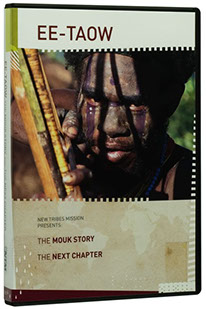

In-ká-hai: How Sweet It Is!
Time Requirement: Approximately 2 hours to read the story. It contains six study topics which can be done as a group or read independently. You can choose to assign this as a reading or do this together as part of the training. If you choose to do this as part of the training, set aside 40 minutes per study topic.
Other options
3. Practice evangelism in everyday life
From the very start, GoodSeed tools are built to be transferable. That means that your team, having experienced the Worldview Rethink Course, will be able to turn around and guide the same course themselves.
Ask the team to divide up into pairs who would then invite someone else to join in a Worldview Rethink course. Each pair may want to begin by practising with believing family members, friends or others from within their church. Or, they may want to practice with another small group. They may decide to begin right away by inviting unbelieving friends.
Read more details and check out resources on guide a course.
The objective here is to get practical experience in sharing the gospel. Be comfortable on “home ground” before heading out into the field.
Another way is to learn how to just give a person a resource that explains the gospel.
Here are details and resources on how this can be done.
Each small group will report back and share their experiences with you, their team leader, and with one another on what it was like to share the gospel.
Many will be energized and excited to “actually be doing it!” before they even go to the mission field.

Guide a Worldview Rethink Course
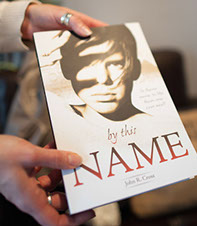
Give away a gospel resource
4. Help the work of local missionaries
Short-term teams often do not have enough time on-site to share the gospel with unbelieving locals in a way that is meaningful and clear. They may also be limited by a lack of knowledge of the local language and worldview. If your team does not have time to follow up, clarify or lay foundational understanding, you may inadvertently introduce misunderstanding or confusion, complications you want to avoid.
If time is short, it may be best to find ways to build up and encourage local believers or simply meet physical needs in that location.
Having said that, there some some things that can be done which can be helpful:
The intent of your trip may not be to teach the gospel to unsaved people; rather, it may be to provide training as to how to share the message of the gospel simply and clearly.
Your team can lead a Worldview Rethink course with local leaders if they have a good level of English. We have found that GoodSeed tools are highly flexible, which means local leaders can readily take what they learned and adapt them to teach their own people.
This would be especially helpful if the local church lacks tools or has had difficulty presenting the gospel message clearly. Training them to teach is valuable in that they face no language or cultural barriers. As permanent members of the community, they are in the best position to follow up and disciple the locals.
We need to remember that the Great Commission is a call to make disciples, not believers.
"Go therefore and make disciples of all nations, baptizing them in the name of the Father and of the Son and of the Holy Spirit" (Matthew 28:19)
Read how one short-term team is doing this.
The GoodSeed tools are particularly suited to the biblically illiterate. Those who first developed the chronological teaching approach spent many years working in remote tribal locations where people were ignorant of the God of the Bible. It was in that setting that hard lessons were learned about what it takes to clearly communicate the Bible’s message to people with a variety of worldviews. The insights gained are reflected in the architecture of GoodSeed tools, making them highly effective and very usable. Read more about the architecture here.
While your team guides local believers through Worldview Rethink, they in turn can use The Lamb or The Story that Matters as their teaching tool.
Check our translations to see which languages may best suit your need. Leave the local church with a stock of resources in their languages for them to use.
Also check out other tools:
The Worldview Rethink visual aids are a valuable supplement. You may want to leave several sets with the locals. As an alternative, show them how to make their own to aid in teaching.
If your team is considering doing a gospel presentation during their trip and you have the support of the local church and missionaries, you may want to read this story for some ideas.
Before proceeding, however, it is very important to ensure that there are local believers or missionaries who are in a position to follow-up your endeavours. If not, this brief evangelistic effort may not have the desired lasting impact.
Help equip local believers
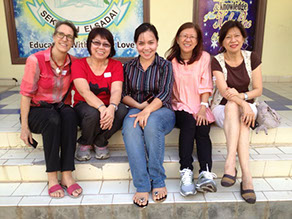
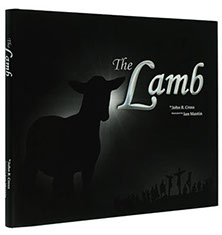
The Story that Matters
The Lamb
Provide Training
Provide Resources

The Stranger
Videobook (Spanish)
The Lamb PowerPoint

Doing a Presentation
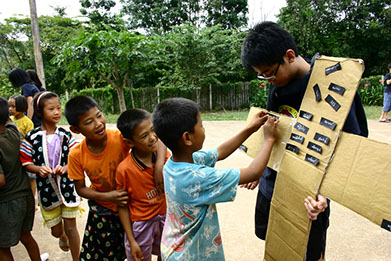
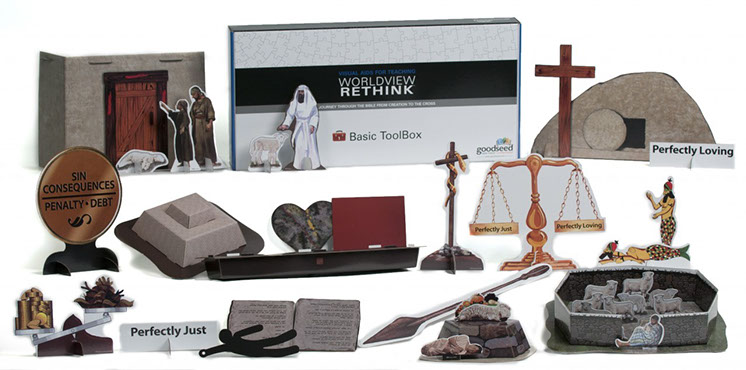

5. Continuing the journey of an ambassador

RELATED ARTICLES
The tools were a God-send on my missions trip to India
Brenna Stoll recently returned home from a missions trip to an orphanage in India. She wrote an email to us to share how she used GoodSeed tools to teach the gospel there. The Lamb was well received by both the little ones as well as the older children. By This Name is perfectly suited for India because it helps people with an Eastern worldview understand the Bible. Read more.
How do we share the gospel on a mission trip?
When you think of the village or people group you are going to meet, can you picture what you would need to teach them so that they understand the gospel clearly? What if the people do not have any Bible knowledge or know nothing about the God of the Bible? How do you explain the Good News? Read more.
A couple of weeks before this Easter season, a group of four women took a flight to another country and spent time teaching teachers how to reach their students with the Good News. What they did will help to spread the Gospel year-round to students who have not heard the message before. Here is their story.
From domestic helper to missionary
In the tiny city-state of Singapore, there are many foreign nationals who go there to find work. They are employed as domestic helpers, construction workers, service staff and more. For churches in Singapore, they see that the “foreign mission field” has arrived at their doorsteps. Learn what God did with some of these migrant workers.
Are you ready to give the good news?
All believers are given the biblical mandate to live a lifelong lifestyle of being ready to share the gospel at a moment’s notice. This sharing doesn’t happen by accident. It starts with us cultivating a deliberate lifestyle of being ready so that when God puts into our lives the opportunity to share, we won’t miss it! Read more.
Would you accept life-changing truth in five minutes?
Asking a stranger to trust us in a span of a few minutes is very difficult, as Etienne discovered. It’s not easy to convince a stranger to believe our message if he doesn’t know who we are. Etienne has learned that time must be spent establishing trust before a listener will believe the message he is sharing. Read more.
Read more stories on GIVING the gospel ![]()
Read more stories on GUIDING a course ![]()

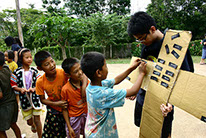
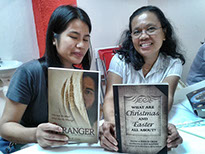
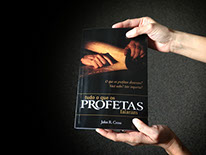


MORE HOW TO ARTICLES
Photo credit: "Bush Pilot" by Nic McPhee is licensed under CC BY 2.0
Photo credit: "Paper Weaving" by Joel Penner is licensed under CC BY 2.0
I WANT TO LEARN
ABOUT GOODSEED
The Monthly
GoodSeed eNewsletter
Sign up to receive articles, testimonies, sneak peeks of new resources & upcoming seminars. You'll receive a PDF copy of The Tabernacle: Model of Messiah as a thank you for partnering with us.
© 2023 GoodSeed International. All rights reserved.
